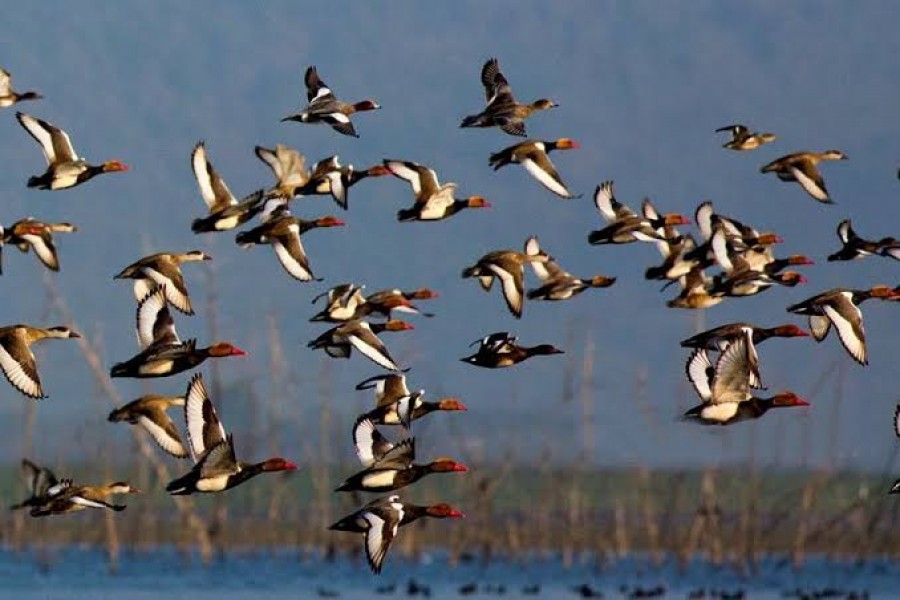There has been a highly noticeable drop in the number of migratory birds flying into the country every winter. They take shelter in this land of moderate cold to flee the severe winter back in their countries of origin. These flights have been occurring for centuries, but a sharp drop in the number of these birds now appears worrying for many. Known as migratory birds or guest birds, these avian travellers have been visiting this swampy land as part of a colourful ritual. Apart from the amateur bird watchers, the sections focused on the migratory birds include professional ornithologists, as well as climatologists and young researchers. There are strong reasons for the people engaged in these sectors to feel edgy over the increasing fall in the migratory birds' arrival in Bangladesh. The most depressing message coming from this decline in the migratory birds is this country is becoming increasingly hostile to nature and its inhabitants from distant lands.
Ironically, people in vast swathes of its coastal area are vulnerable to sea-level rise. On viewing both man and animals as part of nature, people ought to be fully empathetic to the winter-beaten birds from far-away lands. On the contrary, many people seems to be demonstrating a cruel approach towards these helpless birds. The cruel treatments meted out to the migratory birds begin with the destruction orgies related to the guest birds' age-old habitats. Winters in a row these days wear on with fewer bird arrivals than those witnessed in the previous years in and around water bodies. Indiscriminate hunting and trapping of birds by unscrupulous people has long begun scaring them away from their landing and foraging sites. They include the Tanguar and Hakaluki, and other 'haors' (large natural lakes), canals and riverside marshes.
The migratory birds used to stay in the water bodies from October to March every year in the past. To the bewilderment of environmental activists, their number nowadays has dropped to 100,000 from 400,000 to 500,000. This decline in the number of birds is blamed chiefly on the squeezing of the areas conducive to peaceful shelters. Those days seem to be over for good. The migratory birds normally fly 3,500 kilometres to Bangladesh from areas like the snow-covered Siberia, Mongolia and the Tibetan Plateau close to the Himalayas to bask in a temperate clime for around five months. Feeding on myriad types of aquatic creatures and insects, many birds lay eggs here and let the chicks grow. Bangladesh not long ago was a safe winter bird sanctuary for the migratory birds.
With the flights of migratory birds thinning out globally due to hostile human interventions and newer climatic patterns, the future of these bird-centred research ventures might become shrouded in uncertainty. Although overreactive people have started foreseeing a bleak future for the birds, Bangladesh should continue to welcome them. The avian creatures were also used by researchers in locating the conditions the birds face in their flight. In the task they made use of special chips fitted to the birds' legs or necks. The project is being conducted by the International Union for Conservation of Nature (IUCN).


